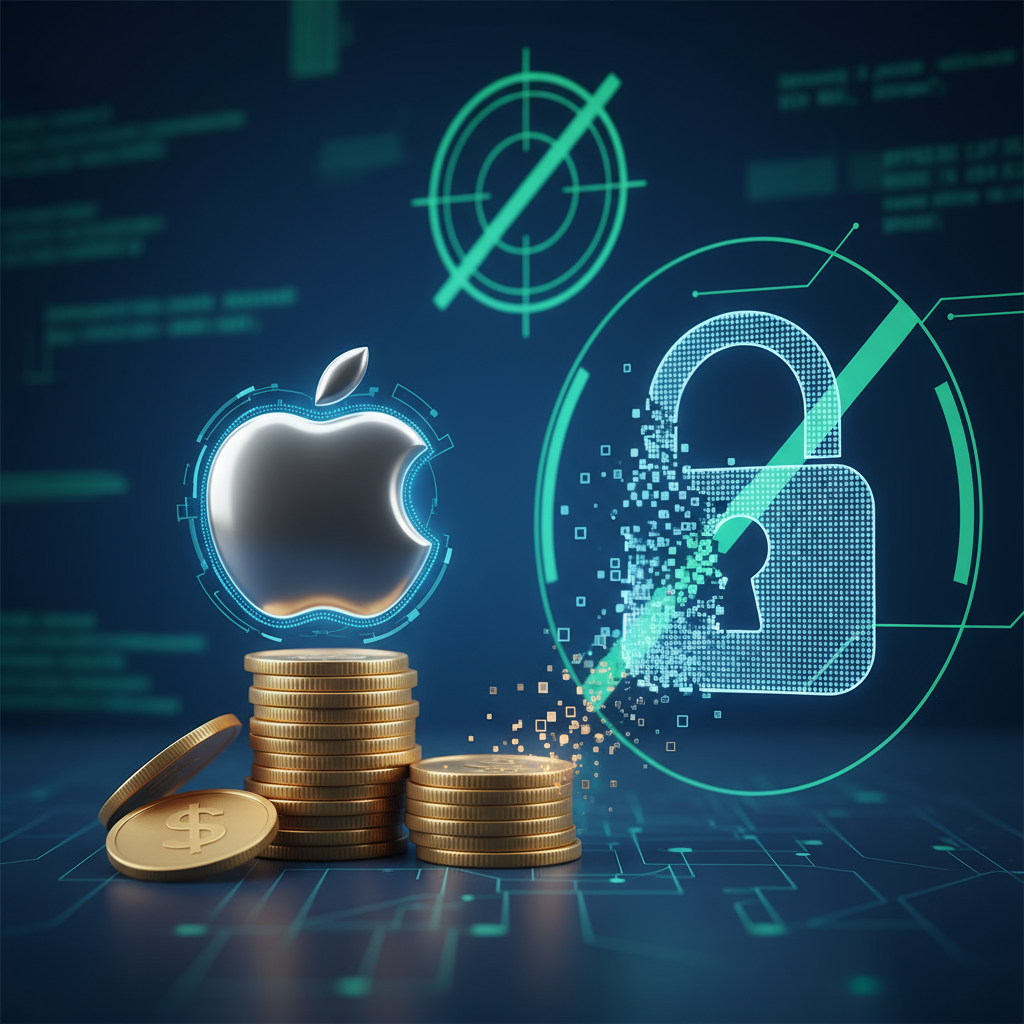Apple’s $2 Million Bounty: The Hunt for Zero-Click RCE Just Got Real
Imagine your iPhone, silently and invisibly compromised – no suspicious links clicked, no shady apps downloaded, not even a single interaction on your part. This terrifying scenario describes a “zero-click Remote Code Execution” (RCE) vulnerability, arguably the holy grail for malicious actors and the ultimate nightmare for users. For years, these elusive flaws have been whispered about in the darkest corners of the cyber underground, their existence proving incredibly valuable to those seeking clandestine access to devices. Now, Apple, a company synonymous with robust security, has made a groundbreaking move, offering an unprecedented $2 million bounty for anyone who can responsibly disclose such a vulnerability. This isn’t just a bug bounty; it’s a declaration of war against the most sophisticated threats, and it signals a new era in cybersecurity.
The Million-Dollar Question: What Exactly is a Zero-Click RCE?
To truly appreciate the significance of Apple’s colossal bounty, we need to understand the beast it’s designed to hunt. A Remote Code Execution (RCE) vulnerability allows an attacker to execute arbitrary code on a victim’s device from a remote location. While RCEs are inherently dangerous, the “zero-click” aspect elevates them to a truly terrifying level.
Most common attack vectors require some form of user interaction. Phishing emails trick you into clicking a malicious link, infected attachments rely on you opening them, and deceptive apps need to be installed. A zero-click RCE, however, bypasses all these defenses. It exploits weaknesses in a device’s core operating system or applications without any user input, often simply by receiving a specially crafted message, file, or network packet. Think of it like a ghost in the machine, able to take control without ever making itself known to the user.
The implications are profound. If a zero-click RCE exists, it means an attacker could potentially gain full control of your device – accessing your messages, photos, financial information, and even your microphone or camera – all without you ever knowing. These vulnerabilities are incredibly rare, notoriously difficult to find, and shockingly expensive on the black market, often fetching millions of dollars from state-sponsored APT (Advanced Persistent Threat) groups or sophisticated criminal organizations.
Why the Sky-High Price Tag? Apple’s Strategic Investment in Security
Apple’s decision to offer a $2 million bounty isn’t a mere act of generosity; it’s a shrewd strategic investment in their core product offering: user trust and security. For a company that prides itself on privacy and a secure ecosystem, the potential existence of undisclosed zero-click RCEs represents an existential threat.
Firstly, the cost of an undiscovered zero-click RCE could far exceed $2 million in terms of reputational damage, customer loss, and potential legal ramifications. A major breach exploiting such a flaw would severely erode the confidence that users place in Apple’s devices. Secondly, by offering such a substantial reward, Apple is effectively outbidding the black market. They are incentivizing ethical hackers, security researchers, and even those who might otherwise be tempted to sell such vulnerabilities to nefarious actors, to report them directly to Apple instead. This “legal” grey market for vulnerabilities is a double-edged sword, but Apple is leveraging it to their advantage.
This move significantly raises the stakes in the ongoing cat-and-mouse game between security researchers and threat actors. It acknowledges the immense effort, expertise, and time required to uncover these sophisticated vulnerabilities. It also highlights Apple’s proactive approach to security, moving beyond reactive patching to actively seeking out the most dangerous flaws before they can be exploited in the wild. This isn’t just about finding bugs; it’s about fostering a global community of top-tier talent to help secure billions of devices worldwide.
The Ripple Effect: What This Means for the Cybersecurity Landscape
Apple’s $2 million bounty is more than just an impressive number; it’s a paradigm shift that will send ripples throughout the cybersecurity industry and beyond.
- Increased Scrutiny: Expect an explosion of interest from top-tier security researchers and ethical hackers who now have an even greater financial incentive to scrutinize Apple’s software. This intensive scrutiny will inevitably lead to the discovery and patching of more vulnerabilities, making Apple’s devices even more secure.
- Raising the Bar: This move sets a new benchmark for bug bounty programs across the tech industry. Other major companies, particularly those focused on user data and privacy, may feel pressured to increase their own payouts to attract similar talent and secure their platforms.
- Impact on Black Market Pricing: While the black market for zero-day vulnerabilities will likely continue to thrive, Apple’s high bounty could potentially deflate the prices of certain high-value flaws by offering a legitimate and safer alternative for researchers to monetize their discoveries.
- Broader Security Trends: The focus on zero-click RCEs underscores the evolving nature of cyber threats. As traditional attack vectors become harder to exploit due to improved user awareness and security measures, attackers are increasingly turning to more sophisticated, stealthy methods. This bounty demonstrates that tech giants are taking this shift seriously.
Securing the Future, One Bounty at a Time
Apple’s $2 million bounty for zero-click RCE vulnerabilities is a testament to the ever-escalating arms race in cybersecurity. It’s a bold, visionary move that emphasizes the company’s commitment to user safety and privacy. By putting such a monumental price tag on these critical flaws, Apple is not only incentivizing their discovery and responsible disclosure but also sending a clear message to malicious actors: their playground is becoming increasingly expensive and dangerous.
For users, this means a renewed promise of security, knowing that one of the world’s largest tech companies is investing heavily in protecting them from the most insidious digital threats. While perfect security remains an elusive goal, initiatives like this propel us closer to a future where our devices are more resilient, and our digital lives more protected. The hunt for the ultimate exploit is on, and Apple is paying top dollar to ensure it ends in a responsible disclosure, not a devastating breach.
